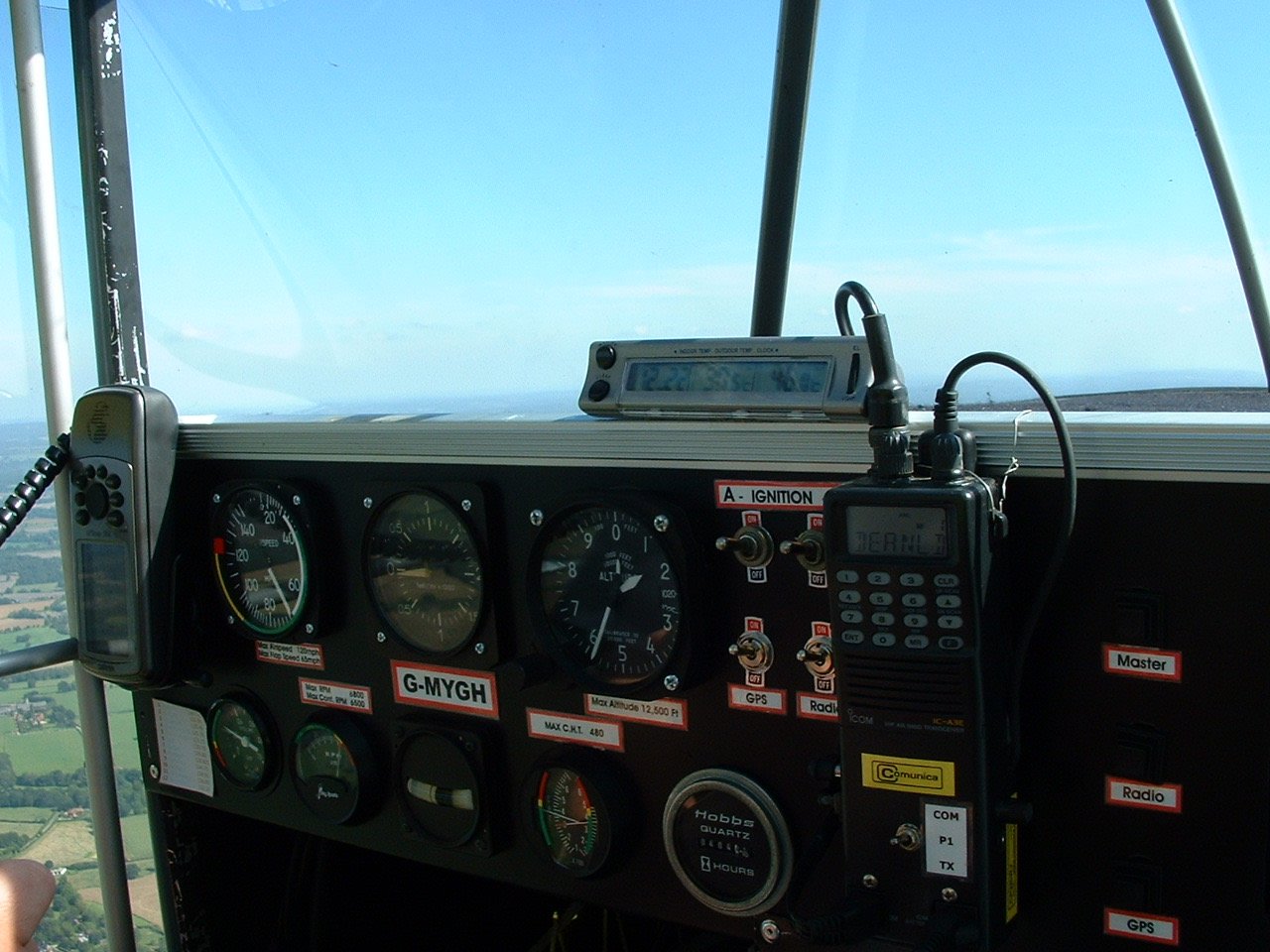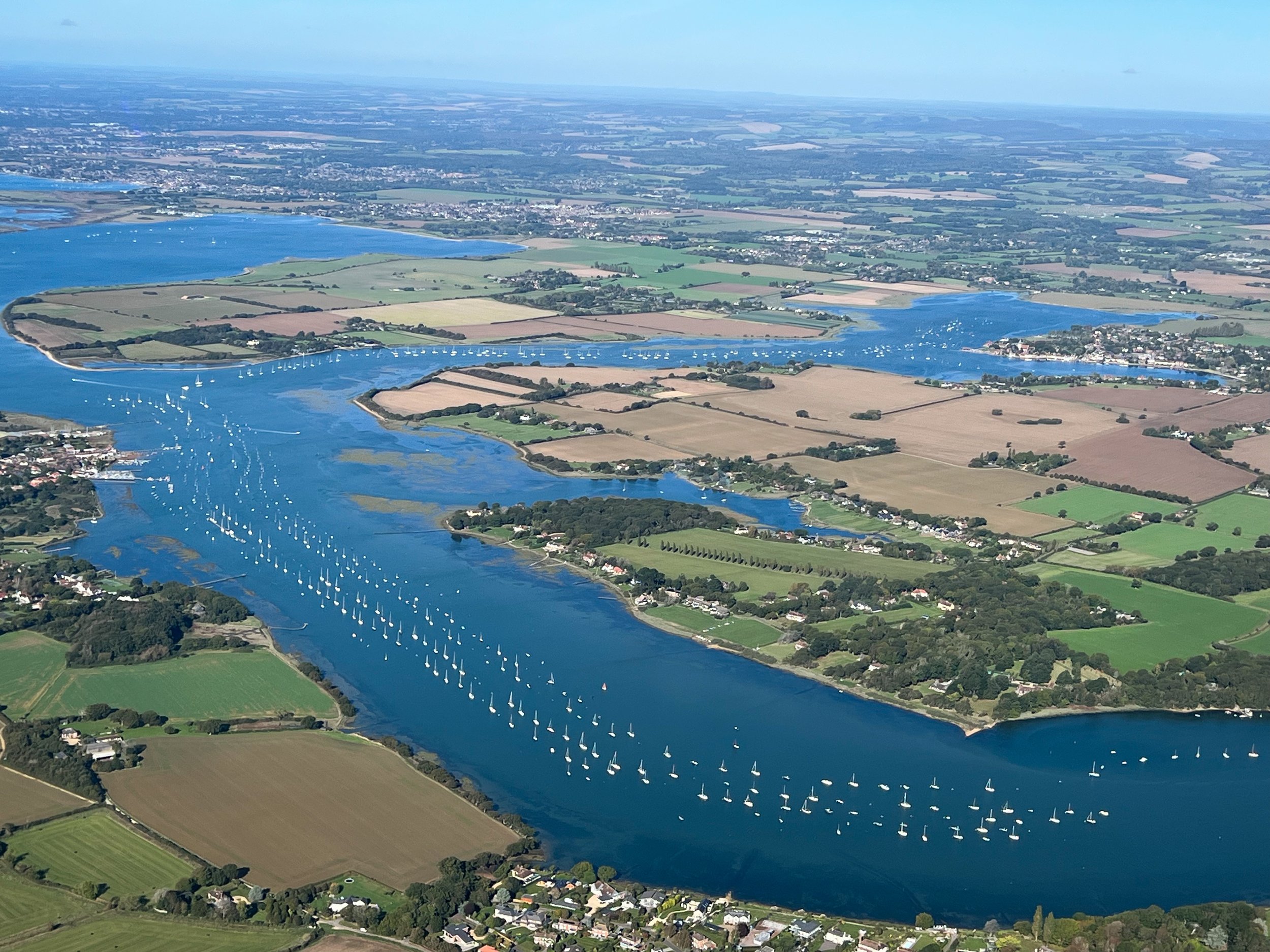Flying
Crushed dreams and the NPPL (M)
I've dreamed of flying since I was 5 years old. When I turned 16, I went to Shoreham Airport for a trial lesson and absolutely loved it. However, when I inquired about the costs for obtaining a Private Pilot's Licence (PPL), I was disheartened to learn that the training required a minimum of 47 hours and multiple ground exams. The expense was far beyond my budget, so I had to put my dreams of soaring through the sky on hold.
Twenty-eight years later, while browsing through a magazine, I came across an article about a small aircraft called the CFM Shadow.
Designed in England by David Cook, the Shadow resembled the sleek, small jet from the James Bond film Octopussy. It not only flew exceptionally well but was also affordably priced. More importantly, it was compatible with the new NPPL (M) licence, making it accessible for those looking to fulfill their flying dreams on a budget.
CFM Shadow
Not understanding much about what the NPPL (M) entailed, I started to investigate further. I discovered that you could obtain the new National Private Pilot's Licence (NPPL) with a microlight rating in just 20 hours and five simpler ground exams. This was less than half the hours required for a full Private Pilot's Licence (PPL), and the lessons were cheaper as well. The total cost for the NPPL (M) turned out to be about one-third of the PPL price.
I was thrilled—this was something I could afford!
But what exactly was a 'microlight'? I had assumed they were similar to hang gliders. I needed to learn more.
In essence, a 'microlight' is a type of aircraft that has a maximum of two seats, weighs less than 600 kg, and cannot be flown in bad weather or at night. However, since I rarely find myself wishing to fly in the middle of a storm, this restriction didn’t bother me. The little Cessna I had flown at 16 from Shoreham could reach speeds of 125 mph and required the full 47-hour PPL. In contrast, modern microlights, some capable of 200 mph, only required 20 hours of training.
Where do I sign up?
My training began with a desire to fly a CFM Shadow. I found an instructor named Keith Mitchell, who was offering NPPL (M) training in a Shadow (G-MZKH) at Deanland near Ripe village. Deanland, once an RAF base, was notable for being the launch site of the first Spitfires on D-Day. Although the CFM Shadow initially drew me to Keith, the aircraft quickly became secondary—my main focus was simply flying.
When Keith sold the Shadow midway through my training, it wasn’t a problem. I actually preferred flying his new Jabiru-powered Thruster Sprint (G-CBIP). While it might not have been the most aesthetically pleasing, it was a joy to fly. I completed my first solo flight and passed my test in the Thruster Sprint a few hours later.
Keith and his student 20 years apart.
Twenty years have elapsed since that first flight with Keith in his Shadow. Over the years, I’ve flown thousands of miles across the UK and France and even completed some aerobatic training.
In 2010, due to changes in my personal life, I had to give up flying. I sold my aircraft and allowed my licenses to expire.
Hooked… again
Three years later, while chatting with Keith about the 20th anniversary of that first flight, he suggested I take a nostalgic joyride with him. How could I refuse?
We took off from Deanland, and Keith let me take the controls. I ended up flying us to Sandown on the Isle of Wight, where I made the landing. The moment the wheels touched down, I was hooked once more.
I knew I needed to get back in the air and, inevitably, acquire another aircraft. This would be a costly endeavour.
First, though, I had to break the news to my wife.
The return of the aviator
After not flying for 13 years, I was concerned about how much I could remember, so I reached out to Luke at Flight Sport Aviation, run by the ever-helpful and charming Shellie. With their assistance, I brushed off the cobwebs and was brought up to re-validation level in just 5 hours.
I had passed my original flying test on April 17th at 9 a.m., and exactly 18 years later, on April 17th at 9 a.m., I took to the skies once more.
Thanks to the truly excellent examiner, Tom Hay, who eased 90% of my exam nerves, I had a thoroughly enjoyable flight. When we returned to the clubhouse, he stood there with a serious expression and said, “Well… (the pause felt like an eternity)… done!”
I highly recommend them; they are a fantastic team.
Buy you own Aircraft?
Once you've obtained your license, you have four main options for getting into the air:
Renting: You can rent an aircraft starting from around £160 per hour. While this might seem pricey, you only pay for the time you use. For instance, if you fly to an airfield 30 minutes away, spend over an hour for lunch, and then fly back, you’re only charged for that hour. There’s no need to worry about insurance, hangarage, maintenance, or even the cost of fuel, as it’s all included.
Sharing: Many aircraft are owned by groups. This way, you share the costs of maintenance, insurance, and hangarage with others. The cost to join a group can vary based on the aircraft’s price and the number of members, typically starting around £5K plus a monthly fee. This is a cost-effective way to fly, though your allocated time might be limited by factors like bad weather.
Purchasing: Microlight aircraft range from £5K to £150K second-hand and from £50K to £250K new. Expect to pay about £10K for a basic aircraft to gain experience, or between £25K and £75K for a well-equipped, high-performance model. Interestingly, aircraft values tend to remain stable over time—if you buy one today for £30K, you’re likely to sell it for a similar amount in 10 years, unlike most other assets.
Building Your Own: There are many kit aircraft available that you can assemble at home. Each step of the construction must be inspected and signed off by a certified inspector for safety reasons. Kits are not cheap, and building one can require thousands of hours of work. If this appeals to you, organizations like the Light Aircraft Association can provide guidance and support.
Each option has its pros and cons, so consider what suits your needs, budget, and interests best.
My aircraft history
G-MYGH - Rans S6 ESD 503
G-MYGH
The first aircraft I purchased was an old Rans S6 ESD, refurbished by Dave Almay at Skycraft for the hefty price of £13K. It featured a small 40-liter fuel tank and was powered by a modest 500cc Rotax 503 two-stroke engine with a pull start. The engine was so underpowered that I had to use the curvature of the Earth to gain any altitude. The Rans was constructed from basic steel tubes and covered with a nylon tent-like material, which was laced together with string. While flying, you could actually see the ground through the laces.
Unfortunately, the aircraft was damaged in a storm while parked on the ground and was subsequently written off by the insurance company. I was in need of another aircraft to complete my charity flight (see flyer magazine below).
G-BZNH - Rans S6 ES 582
G-BZNH
I found my next aircraft just in time online. This one was another Rans S6, but unlike the previous model, it was the newer ES version. It featured twin 30-liter fuel tanks and a more powerful 600cc engine.
Privately owned and in good condition, it cost £16K. While it was still powered by a Rotax two-stroke engine, the ES model came with the larger and more powerful '582 Bluetop' version. It even had an electric start — wow!
G-SIMP - Jabiru UL-450
G-SIMP
My next aircraft was a significant step up from anything I’d flown before. I acquired a second-hand Australian Jabiru UL-450 in excellent condition for £28K. This all-composite beauty was powered by a 2.2-liter engine and featured a luxurious leather interior with carpet, switches, and dials—truly amazing.
Jabirus have a reputation for tricky handling due to their small ailerons and floaty wings. However, you get used to it over time, and it’s undeniably one of the best value-for-money aircraft available.
Economical to operate, the Jabiru used just 12 liters of fuel per hour. To put it in perspective, I could fly from Brighton to Abbeville in France and back for less than £30. It was more cost-effective to run than a Tesla.
G-LESF - Jabiru UL-450
G-LESF
After getting my license re-validated, I contacted the bank, signed the necessary paperwork, and ordered a new Jabiru UL-450. This aircraft was custom-built to my specifications by the UK Jabiru agent, SkyCraft. I personally designed the panel layout, selected the instruments and equipment, and chose the color scheme.
The new Jabiru features several upgrades, including an extended-height rudder, wing tips to enhance slow-speed performance and fuel efficiency, and the latest specification undercarriage. It’s equipped with an Italian GT propeller, blue leather seats, and carpet, as well as a cabin heater for winter flights.
For navigation and safety, it has two Sat Navs (one as a backup), a Sky Echo ADS-B device that displays nearby aircraft on the Sat Nav screen and announces their proximity through the headphones, and a speed monitoring device that audibly alerts you if you are too fast or slow during takeoff and landing.
G-LESF
G-LESF is equipped with strobe lights, landing lights, and a two-stage carburettor heating system (both electric and traditional) to prevent icing in cold, damp conditions. And, naturally, it features at least four built-in USB and USB-C fast-charging ports to keep all our modern gadgets powered.
So, if you spot a small aircraft cruising along the south coast, it’s likely my wife and I on our way to enjoy lunch somewhere.
G-LESF: Collection Day
More than just flying
Flying for me isn’t just about having fun. Over the years I’ve used it as a way to help raise over £40,000 for charity - See the article in Flyer magazine below.
Flying on TV
A few years ago, my flying pals and myself were in a TV program called Scrapheap Challenge - we were team ‘Plane Crazy' and I was the Captain. If you watch the clip below you can see me flying my Jabiru UL-450.









































































